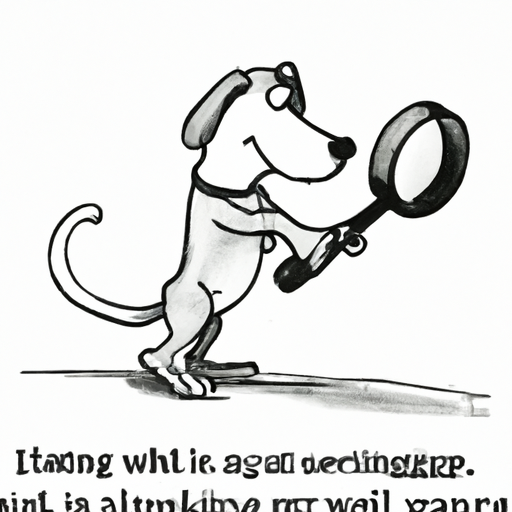Introduction
Have you ever wondered why your dog’s tail wags? It’s a fascinating aspect of canine behavior that intrigues every dog lover and caregiver like yourself. While it’s commonly believed that tail wagging is a sign of a happy dog, this isn’t always the case. Let’s dive deep into the world of canine tail language and understand the science and psychology behind a wagging tail.
Understanding Canine Communication
Just as humans use verbal and non-verbal cues to communicate, dogs too have their unique language. Their tail, ears, eyes, and body posture all contribute to this language. Understanding these cues can help you communicate effectively with your furry friend.
Tail Positioning
Dogs use their tail positioning to convey different emotions and intentions. Here’s a basic understanding of what different tail positions might mean:
- Tail Held High: Dominance, confidence, or agitation
- Tail Straight Out: Alertness and attentiveness
- Tail Lowered: Submission, fear, or discomfort
- Tail Between Legs: Extreme fear or submission
Tail Wagging
Tail wagging is more complex and often misunderstood. It involves different aspects such as speed, direction, and breadth of wag.
- Speed of Wag: A fast wag often indicates excitement. A slow wag could be a signal of uncertainty or caution.
- Direction of Wag: A wag to the right often signals positive emotions, while a wag to the left might indicate negative emotions.
- Breadth of Wag: Broad wags are generally friendly, while narrow wags could mean tension or agitation.
The Science Behind Tail Wagging
The wagging of a dog’s tail is controlled by their autonomous nervous system. It means that it’s more of an involuntary reaction to their emotional state rather than a conscious decision. The right side of a dog’s brain controls their left side and vice versa. This is why the direction of their tail wag can indicate their emotional state.
The Role of Breed and Individual Differences
It’s crucial to remember that tail wagging can vary greatly among different breeds and individual dogs. Some breeds naturally have their tails curled up over their backs, while some have docked tails. Individual dogs can also have unique wagging patterns. Hence, understanding your dog’s tail language requires careful observation and familiarity.
Common Misconceptions about Tail Wagging
Here are a few common misconceptions about tail wagging that you should be aware of:
- All Tail Wagging Means Happiness: As we’ve seen, tail wagging can signal a range of emotions, not just happiness.
- A Dog with a Wagging Tail is Always Friendly: A wagging tail can also mean agitation or fear, so it’s essential to observe other body language cues.
FAQ’s
1. Why does my dog wag his tail when he sees me?
It’s generally a sign of happiness and excitement. Your dog is glad to see you!
2. Can cats wag their tails too?
Yes, cats do wag their tails, but their tail language is different from dogs.
3. Why does my dog wag his tail while sleeping?
Dogs can wag their tails during REM sleep, possibly reacting to their dreams.
4. What does it mean when my dog wags his tail and barks?
It depends on the context. It could be a sign of excitement, fear, or agitation.
5. Why does my dog’s tail go still when he’s scared?
A still or tucked tail generally indicates fear or submission.
In conclusion, tail wagging is a complex form of canine communication that involves various factors. As a responsible and caring dog owner, understanding your dog’s tail language can help you understand their emotions better and provide effective care. Remember, every dog is unique, and understanding them requires patience, observation, and lots of love. Happy dog parenting!



